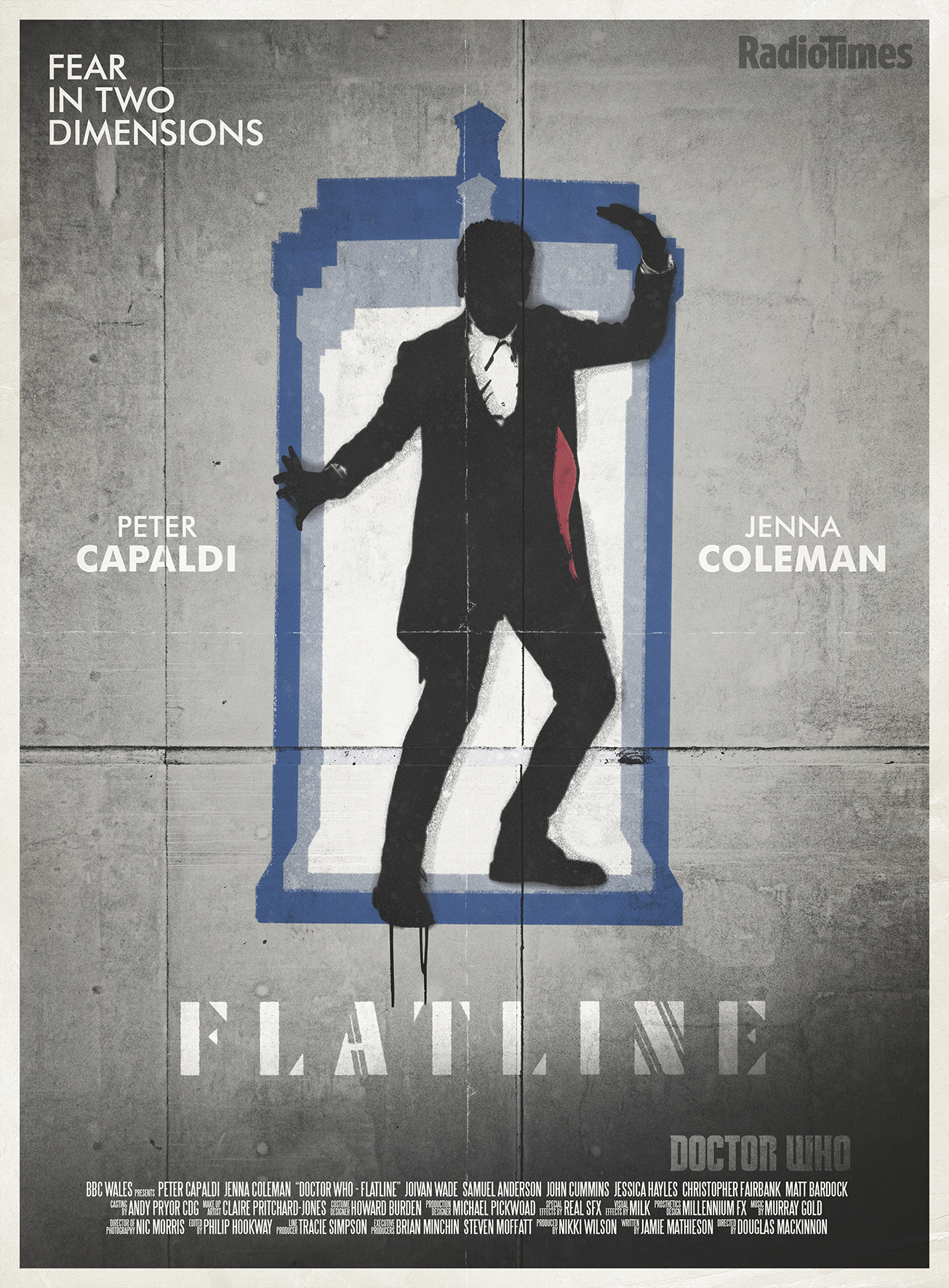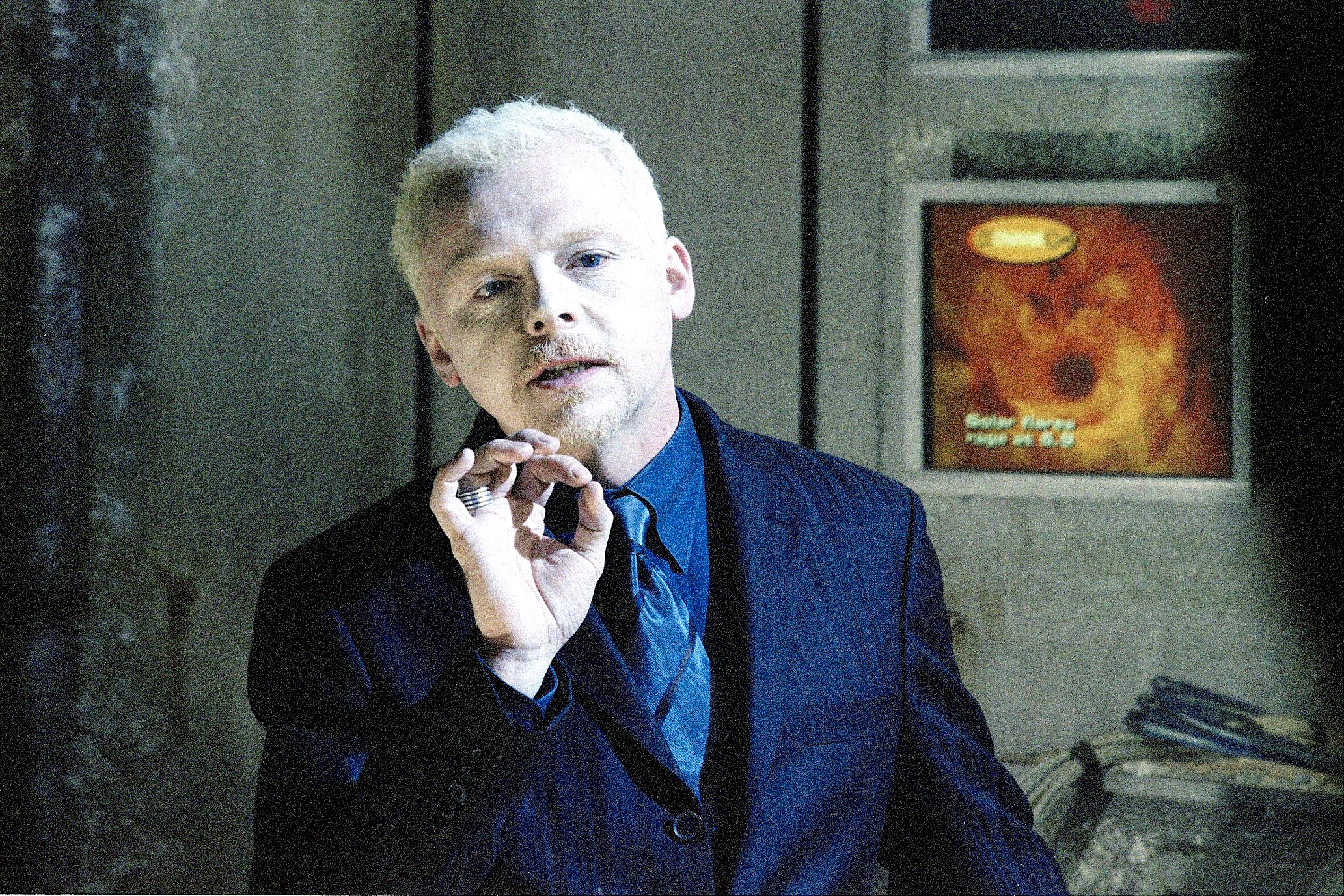The Doctor mistakenly returns Clara to present-day Bristol, where the exterior dimensions of the TARDIS have started to shrink. He sends Clara out to investigate, where she meets Rigsy, a graffiti artist on community service, who tells her about eight recent disappearances, commemorated on a mural inside an underpass tunnel. Clara returns to the TARDIS to find its exterior diminished to the point that The Doctor cannot exit. She carries the TARDIS in her handbag while she and Rigsy search a missing person’s flat. Between them, they deduce that the disappearances are the result of two-dimensional aliens experimenting with 3-D.
Attacked by ‘The Boneless’ in the flat, The Doctor, Clara and Rigsy escape and head for the underpass tunnel, which The Doctor thinks is a hiding place for the creatures. The ever-shrinking TARDIS is lost as Clara, Rigsy and the community service crew pursue The Boneless into a train tunnel. After learning the aliens are hostile, Clara and Rigsy fight them using Rigsy’s spray-painted image of a door, which tricks them into restoring energy to the TARDIS, so it can return to its original size. The Doctor emerges from the TARDIS and sends The Boneless back to their own dimension.
There’s obviously some production issue preventing The Doctor and Clara from appearing onscreen together, as this is the third (and not last) episode in which the story keeps them apart. But this takes nothing away from what is the most chilling and realistic Doctor Who episode since 1989’s Survival, which also revolved around community service and juvenile delinquents. From the unbearably creepy cold open in which a man is sucked into a wall to the prolonged terror of The Boneless seeping out of the mural, it has a raw horror that the grim depiction of social dysfunction only adds to.
‘Flatline’ is kept from becoming utterly downbeat by the fun and visually stimulating idea of dimensional anomalies affecting the TARDIS, in what is one of the most artistically interesting episodes of the series. Along with Rigsy’s upbeat charm, this keeps the episode cute and light rather than falling victim to the bleakness of the storyline or the fatalism of Rigsy’s supervisor Fenton. Jamie Matheson’s second consecutive script is as arresting as ‘Mummy on the Orient Express’ though completely different in style and execution. It does seem that all the best ideas in the season have come from the same writer.

There’s too much going on to do anything but gesture to the ongoing tensions in the relationships of The Doctor, Clara and Danny (again absent), and having Clara pretend to be The Doctor doesn’t add anything except a couple of gags. After a few episodes without her, Missy re-appears at the end of the episode in the usual clunky, unrelated way and we’re back to the tedious game of ‘who knows what’ concerning The Doctor’s knowledge of Danny’s feelings about Clara that we had before ‘The Caretaker’. Not only do the episodes act independently, so do The Doctor and Clara.
As with Matheson’s previous effort, ‘Flatline’ is a good episode for guest characters. Rigsy is delightful, underscoring the success of this season in giving us sympathetic and intelligent portrayals of disadvantaged kids. And, as with Courtney, he seems like a waste of a companion. Fenton (played by veteran actor Christopher Fairbank) is terrifically mean and crusty, offering a rather pessimistic view of the guardians of British society. In a broader sense, we get a more insightful and plausible (if notably harsher) view of the society and culture of modern Britain than Doctor Who usually gives us. And it’s very welcome!
Just as ‘Mummy on the Orient Express’ reminded us of what Doctor Who was capable of in the 1970s, ‘Flatline’ shows us what is possible when the programme turns its hand to social science-fiction. Matheson’s back-to-back scripts are fitting tributes to Doctor Who’s versatility as both space and soap opera. Stories like ‘Rose’, ‘Night Terrors’ and ‘Survival’ gave us a challenging and politically engaged look at British working-class life, and here we get science-fiction that is similarly socially conscious and representative of everyday life. The fantasy element is just as compelling, with a neat play on the idea of the disproportionate dimensions of the TARDIS. Visually, it’s one of the more remarkable episodes of Doctor Who, with level of artistic abstraction that almost approaches the avant-garde but is kept in check by a thrilling story. It doesn’t even matter that we have to put brakes on the development of characters.




One thought on “DOCTOR WHO: FLATLINE (S8E09)”